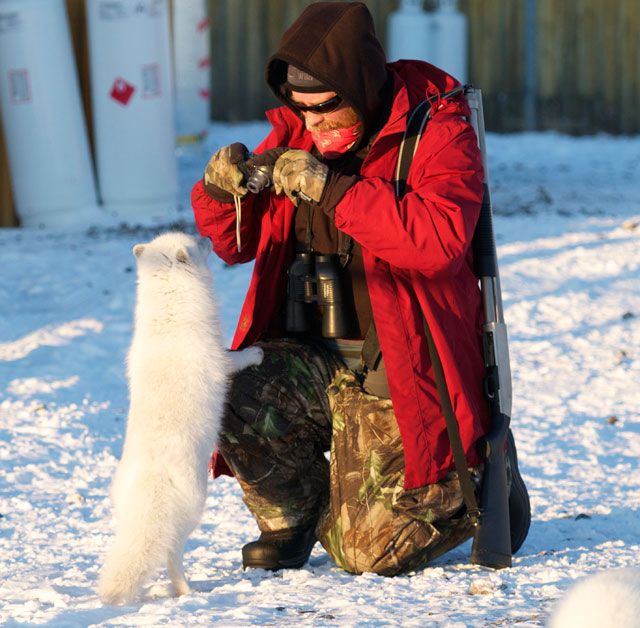by Churchill Wild Guide Terry Elliot
People come to Seal River Heritage Lodge to see the polar bears, but on this occasion the arctic fox obviously stole the show!
Vulpes Lagopus has cyclical population numbers. More prey equals more foxes, and we were seeing lots of lemmings all summer so this was obviously good for the kits (baby foxes). We counted as many as 14 at one time this year, probably a family group with lots of infighting for position in the pecking order.
The arctic foxes have always been bold and inquisitive creatures, but especially so in this photo. Typically they will follow a polar bear out on to the ice and scavenge for the winter. During the summer their coat turns brown, they breed and eat lemmings, eggs, birds, hares, even insects and frogs.
In a prosperous year the females can have as many as 16 kits. Their dense fur enables them to withstand extreme cold temperatures and leave their red-haired cousins behind at the tree line. When sleeping, they will curl into a tight ball with their bushy tail over their nose.
My wife calls this picture “Taming the Hunter”. Unfortunately the photo I was taking here did not turn out as well as the photo of me taking it. It’s a terrible thing when the wildlife is so close to your camera that you can’t get focused. But you have to take the wonderful with the almost-wonderful.
And I did get a decent shot of his ear 🙂










Are arctic foxes seen through out the year?
Hi Carrie, the Arctic foxes are more commonly seen when the snow is on the ground in the fall.